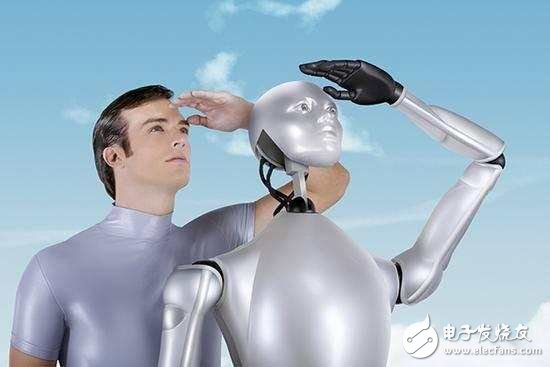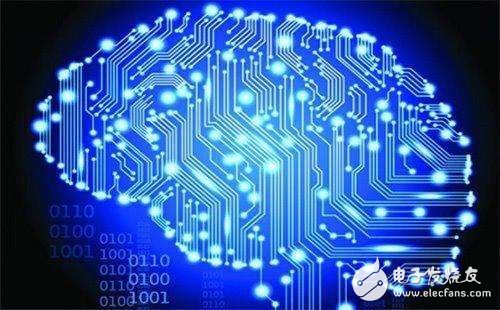New technologies will be more inclined to technological change, so that the benefits of technology are enjoyed by a small number of people in society.
Following the release of two important reports on artificial intelligence in October, the US White House followed up on December 20th to publish a report on artificial intelligence - Artificial Intelligence, Automation and Economy (ArTIficial Intelligence, AutomaTIon). , and the Economy).
The report was prepared by the staff of the US Government Economic Advisory Board, the National Policy Committee, the National Economic Council, the Office of Management and Budget, and the Office of Science and Technology Policy.
The latest report believes that responding to the artificial intelligence-driven automation economy is a major policy challenge that the follow-up government will face. The next government should develop policies to promote the development of artificial intelligence and unlock the creative potential of businesses and workers to ensure the United States' leadership in the creation and use of artificial intelligence.


Report cover
KrisTIn Lee, director of the White House's Department of External Relations and senior policy adviser, said, "The accelerated advancement of artificial intelligence technology will automate some of the tasks that have long required human labor. These shifts will be for the individual, the economy, and Society brings new opportunities, but it will also disintegrate the livelihoods of millions of Americans. This new report investigates the expected impact of artificial intelligence-driven automation on the economy and proposes to take advantage of artificial intelligence and reduce its costs. a broad strategy."
In response to the impact of artificial intelligence, the report presented three important recommendations to policy makers.
In the latest third report, the White House elaborated on the improvement in productivity and the advancement of automation brought about by the development of artificial intelligence. These advances can create more value for society and bring about some changes. For example, some jobs will be replaced by machines, and workers will face problems such as re-employment.
The report believes that policy makers need to be prepared for change, especially in the following five areas:
1. Artificial intelligence will have a positive impact on productivity growth;
2. Changes in job market demand skills, including increased demand for higher-level technical skills;
3. The distribution of impacts is uneven, with different impacts on different sectors, salary levels, education levels, job types and regions;
4. As some job positions disappear and new types of jobs appear, the labor market will be disrupted;
5. Some workers will be unemployed for a short period of time, and unemployment may take longer, depending on the policy response.
In the report, the artificial intelligence expert evaluated the relationship between the characteristics of the existing occupation and the current status of each occupation based on the technical characteristics of artificial intelligence. According to the study, 47% of US jobs are at risk of being replaced by artificial intelligence technology and computerization during this period. However, researchers at the Organisation for Economic Co-operation and Development (OECD) emphasize that the goal of automation is to increase efficiency, not to replace occupations, which essentially creates new types of tasks. In the future, many professions may change, as some of their related tasks will become automated, so OECD analysis believes that very few jobs will be fully automated, with an estimated 9% of employment machines at risk of complete disappearance. If these predictions come true, the livelihoods of millions of Americans will be affected, and the economic development in the short and medium term will be affected.
In addition to having an impact on the type of work, the report also points to the impact of artificial intelligence on the wages of American workers. The study found that only 31% of jobs with an hourly wage of more than $40 and $20 to $40 were affected, and an hourly wage of less than $20 but up to 83% would be subject to automation pressure (below) 3a). In addition, the OECD study estimates that workers with lower levels of education are more likely to be automatically replaced than those with higher education (Figure 3b below). In fact, the authors of the OECD study estimate that 44% of American workers below the high school education are likely to be automated, while only 1% of undergraduate or higher education have such jobs. To a certain extent, education and wages are related to skills, which means that demand for low-level technology has fallen sharply, and demand for highly skilled workers has barely fallen. These estimates suggest that short-term technology change skill bias will persist.
Artificial intelligence will create some new jobs while causing some work to change. The report pointed out that there are four types of work that may be directly driven by artificial intelligence in the future. These are the cooperation between humans and existing artificial intelligence technologies, the development of new artificial intelligence technologies, the supervision of artificial intelligence technologies in practice, and the promotion of social transformation with artificial intelligence technologies. Employment in these areas will grow.
Based on these changes, the report also presented three important recommendations to policy makers:
1. Investing and developing for the many advantages of artificial intelligence;
2. Educate and train the public about future types of work;
3. Help workers during the transition and ensure that workers' rights are shared by widely shared economic growth.
Technological progress is the main driver of GDP growth. The development of artificial intelligence can bring about the improvement of automation efficiency. On a global scale, the US government is paying attention to the development of artificial intelligence earlier. Since May of this year, the White House has held four lectures in four months with four American universities. It covers the laws and policies of artificial intelligence, social welfare, safety and control, and social and economic impacts.
After the lecture, the White House announced two artificial intelligence reports in October, namely "Preparing for the Future of ArTIficial Intelligence" and "National Artificial Intelligence Research and Development Strategic Plan" ( National Artificial Intelligence Research and Development Strategic Plan).
In early December, the United States also held a hearing on artificial intelligence. Expert testimonies from various fields involve the increase in the demand for privacy security in the development of artificial intelligence, how to compete with countries such as China and Russia, and how the government cooperates with research departments and private companies. At the same time, the experts also answered questions from parliamentarians on how to deal with the relationship between new technologies and ethics and regulations.
The international competition of artificial intelligence is becoming more and more fierce

In addition to the United States, more and more countries are beginning to put artificial intelligence on the agenda of policy making, including China.
On May 23, 2016, the National Development and Reform Commission, the Ministry of Science and Technology, the Ministry of Industry and Information Technology and the Office of the Internet Information Office jointly issued the “Three-Year Action Plan for “Internet +†Artificial Intelligence†(hereinafter referred to as the “Programâ€). According to the "Program", by 2018, China will basically establish an artificial intelligence industry system, an innovative service system and a standardization system, and cultivate some of the world's leading artificial intelligence backbone enterprises to form a scale of 100 billion-level artificial intelligence market applications.
In addition to proposing market size and goals, the Chinese government also proposed in the “Program†that in order to reduce the cost of artificial intelligence innovation, China will build a variety of artificial intelligences such as documents, voice, images, videos, maps and industry application data that are open to the society. Massive training resource library and standard test data set. The state will also build a basic resource service platform that meets the needs of intelligent computing such as deep learning, including a new computing cluster sharing platform, a cloud intelligent analysis processing service platform, and an open platform for algorithms and technologies.
In terms of software and hardware development, the "Proposal" proposes to support the development of basic software and hardware technologies such as chips, sensors, operating systems, storage systems, high-end servers, key network devices, network security technology devices, middleware, etc. in the field of artificial intelligence, and support open source. Software and hardware platform and ecological construction.
It is worth mentioning that, according to the data collected by SCI, from 2013 to 2015, the article of “deep learning†has increased by about six times. From 2014 to 2015, regardless of the number of articles or valid citation data, China has surpassed the United States and is in the lead.
In addition to China, the Government Office for Science also released an artificial intelligence report in November this year, proposing to use the artificial intelligence innovation to enhance the British national strength. Matt Hancock, the UK's Minister of Digitalization and Culture, pointed out in the report that artificial intelligence has allowed us to talk to our smartphones, recommend music to us, describe photos for people with visual impairments, and warn cities. Possible fire risk. The UK government is also studying the potential applications of this technology to provide public services.
In Asia, Japan is also actively preparing for artificial intelligence competitions. According to Japanese media reports, the Japanese government plans to spend 4 billion yen (about 250 million yuan) to promote farming automation as of March 2017 and assist companies in developing 20 different types of robots.
China leading manufacturers and suppliers of DC Support Capacitors,DC Capacitor, and we are specialize in Electrolytic capacitor,High Voltage Capacitor, etc.DC Support Capacitors
DC Support Capacitors,DC Capacitor,Electrolytic Capacitor,High Voltage Capacitor
YANGZHOU POSITIONING TECH CO., LTD , https://www.yzpstcc.com